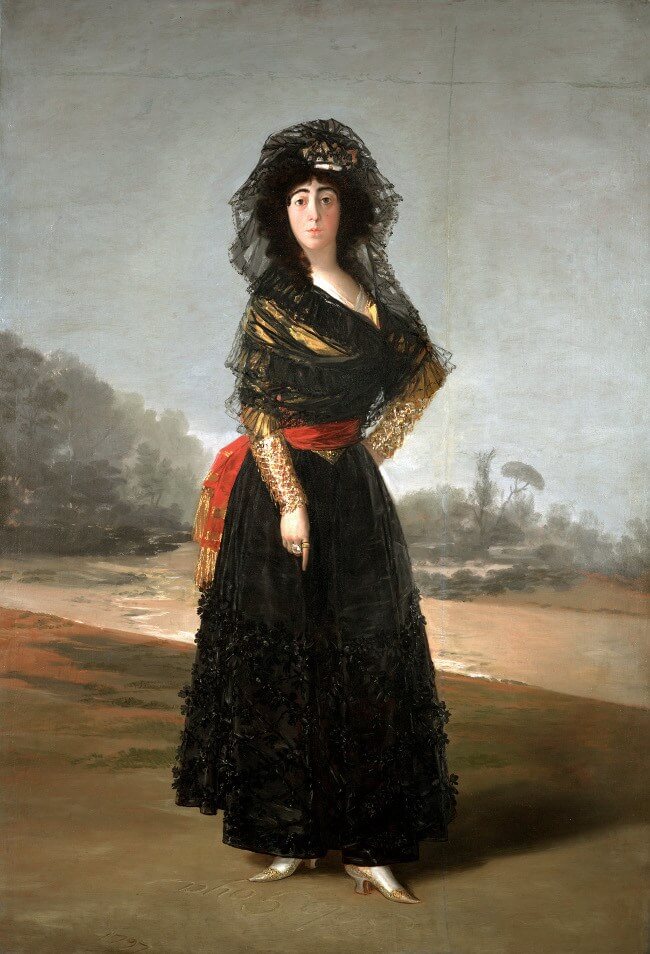Goya painted the duchess at least twice, once in white and here dressed in the ‘maja’ style, possibly to endear herself to her subjects as a woman of the people, and in black due to the death of her husband the year before. The detail and the translucence of her mantilla are a virtuoso flourish of vividly tactile brushwork, while the gold of her bodice seems to burn and crackle beneath the black lace (Agadoo!) that covers it, as if her interior world can’t be contained or concealed by clothes or custom. Behind her, the almost impressionistic swirls of soft colour show her estate (not all humility, then) and contrast with her definiteness, and the way that Goya makes the servile viewer look at her full length, from beneath. Her face is a study of a different kind of strength: unflinching, intelligent, beautiful, imperious. One hand is on a hip – she’s had enough of your shit – while her other hand is pointed at the sand, where the words “Solo Goya” (Only Goya) are carved. Is this about love or art (“only I could paint this”)? We don’t know the full nature of their relationship, but we do know that she was of huge significance to Goya, and that he loved this painting and never let it go as long as he lived. This is a picture that conceals as much as it reveals, where the protagonist is at once on display and in disguise, and where the mystery of the subject’s history only adds to the allure of her power and beauty.
 Kitchen Maid -de Velázquez
Kitchen Maid -de Velázquez